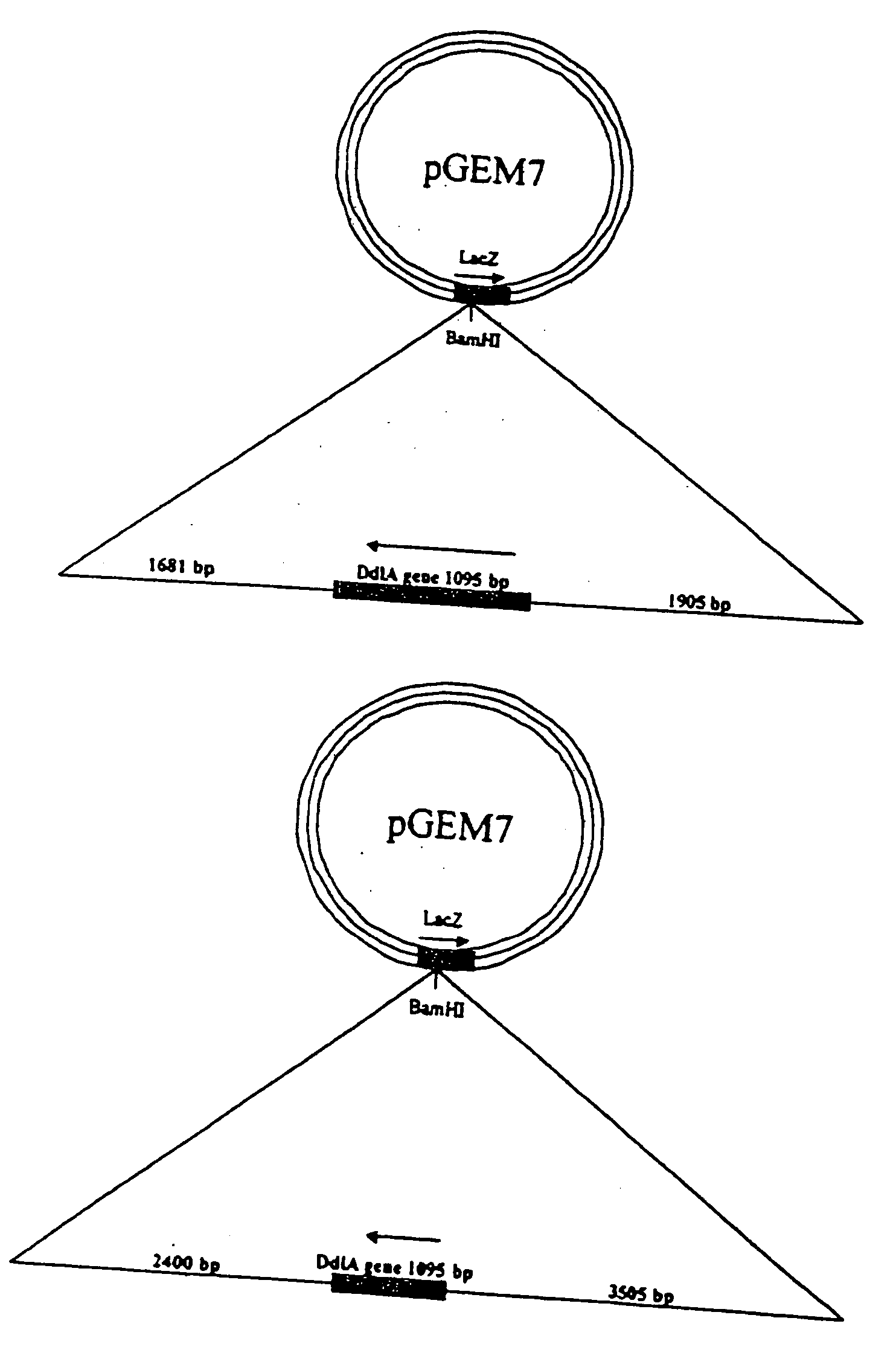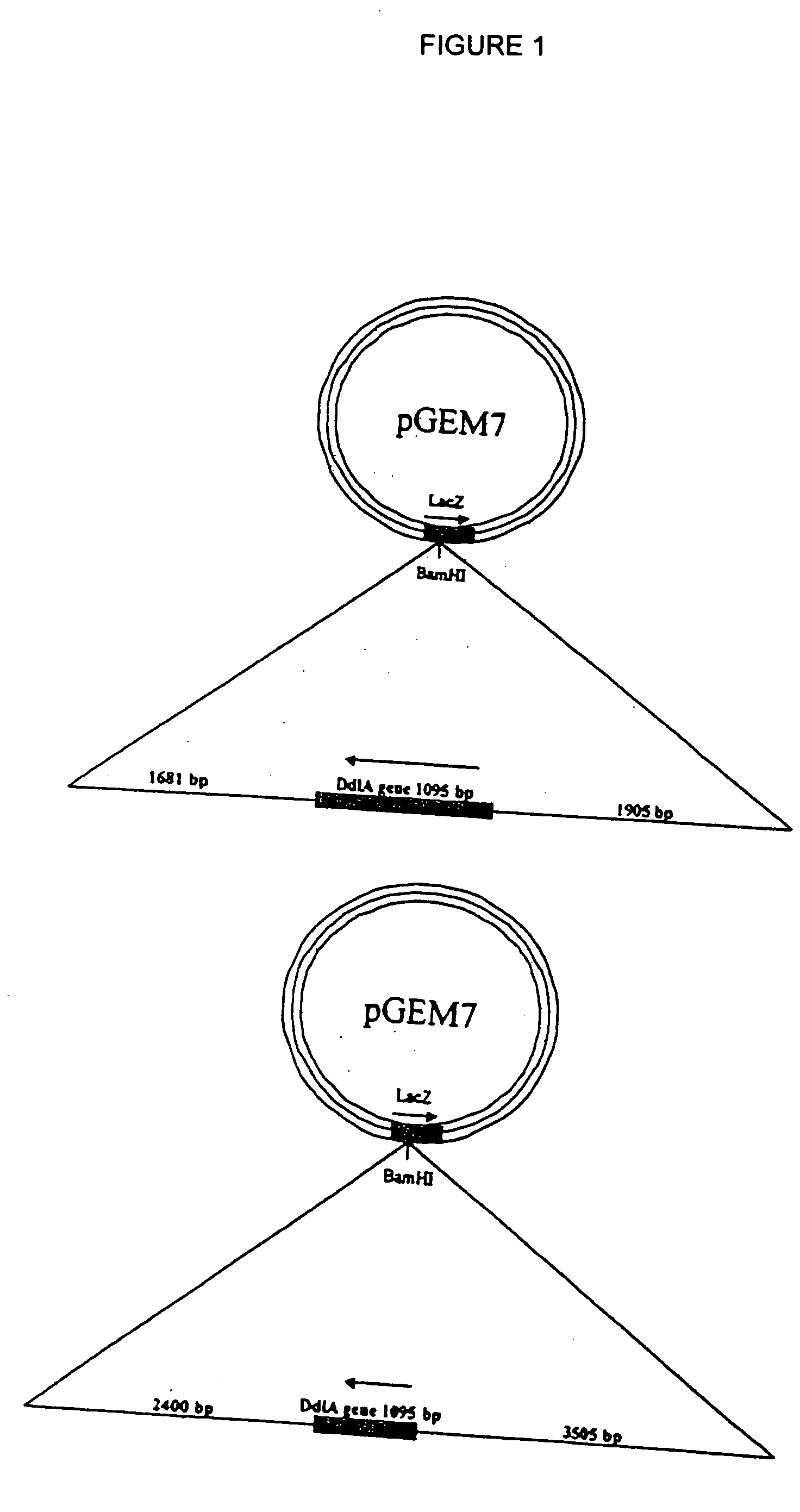Method of inhibiting dihydrofolate reductase; screening assay for the identification of novel therapeutics and their cellular targets
a dihydrofolate reductase and inhibitor technology, applied in the field of inhibiting dihydrofolate reductase, can solve the problems of poorly understood natural laws governing the access and interaction of a given compound to the intracellular space of a bacterial, fungal or even human cell, and achieve the effect of reducing the number of side effects, and improving the safety of us
- Summary
- Abstract
- Description
- Claims
- Application Information
AI Technical Summary
Problems solved by technology
Method used
Image
Examples
example 1
[0164] In the example described here, the inventors the principles of target overexpression and drug resistance was exploited in the development of a high throughput screening method for the identification of antibacterial compounds and their targets. The method is generalizable to a wide variety of systems including antifungal, antiparasitc and anticancer drug discovery.
[0165] The method begins with the identification of compounds in a small molecule screening library that have antibacterial activity against E. coli strain MC1061 a hyper-permeable rough lipopolysaccharide mutant (21A hyper-permeable strain of E. coli was chosen to maximize the opportunity to detect small molecules with antibacterial potential. Each of the compounds that demonstrated antibacterial activity were subsequently subjected to MIC analysis to determine the minimum concentration necessary to inhibit bacterial growth. Having established growth-retarding concentrations of each active molecule...
example 2
Screening for Inhibitors of Bacterial DHFR
[0171] A library of compounds (50,000) sourced from Maybridge (Cornwall, England) were screened against recombinant E. coli DHFR in a highly automated format. The gene (folA) encoding dihydrofolate reductase (DHFR) was PCR amplified from E. coli MG1655 chromosomal DNA with primers, 5′-C ATC TTA CAT ATG ATC AGT CTG ATT GCG GC-3′ [SEQ ID NO: 3] and 5′-CTA CTC GAG CCG CCG CTC CAG MT CT-3′ [SEQ ID NO: 4], containing NdeI and XhoI restriction sites (underlined), respectively. The gene was cloned lacking a stop codon into NdeI and XhoI digested pET26b to form pET26b-folA, which incorporates a C-terminal polyhistidine-tag. Polyhistidine-tagged DHFR was purified to homogeneity as described previously (25).
[0172] DHF reductase activity was assayed continuously in 96-well microplates by monitoring the decrease of NADPH at an absorbance of 340 nm (26). Assays were carried out at 25° C. and performed in duplicate. The 200 μL reaction mixture contained...
example 3
Antibacterial Properties of Novel DHFR Inhibitors and Mechanism of Action
[0176] Four molecules identified as inhibitors of E. coli DHFR in Example 2 were evaluated for their antibacterial efficacy against a laboratory strain of E. coli and against the same strain that was overexpressing recombinant E. coli DHFR. All of these molecules showed a dependence of minimum inhibitory concentration (MIC) on the expression of DHFR in this strain.
[0177] A strain of E. coli in which the expression of the folA gene and ultimately the copy number of the FolA protein could be varied was created for these studies. The folA gene was cloned into the pBAD18-Apr vector (34) and transformed into E. coli strain CW2553 contains the pAKO1 plasmid (35). Strain CW2553 is devoid of a functional chromosomal arabinose transporter while plasmid pAK01 encodes araE, an arabinose transporter under control of a tac (IPTG-inducible) promoter. This system allowed for the controlled expression of the folA gene.
[0178...
PUM
| Property | Measurement | Unit |
|---|---|---|
| optical density | aaaaa | aaaaa |
| threshold | aaaaa | aaaaa |
| concentrations | aaaaa | aaaaa |
Abstract
Description
Claims
Application Information
 Login to View More
Login to View More - Generate Ideas
- Intellectual Property
- Life Sciences
- Materials
- Tech Scout
- Unparalleled Data Quality
- Higher Quality Content
- 60% Fewer Hallucinations
Browse by: Latest US Patents, China's latest patents, Technical Efficacy Thesaurus, Application Domain, Technology Topic, Popular Technical Reports.
© 2025 PatSnap. All rights reserved.Legal|Privacy policy|Modern Slavery Act Transparency Statement|Sitemap|About US| Contact US: help@patsnap.com



